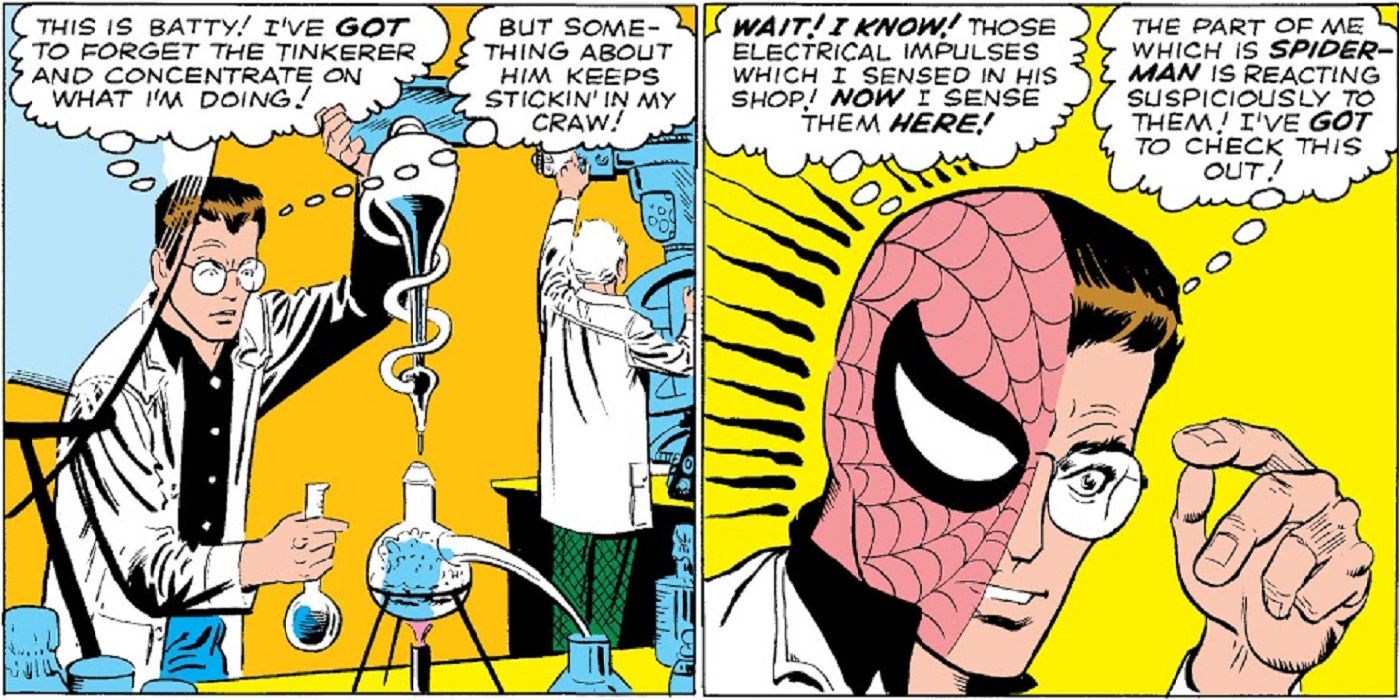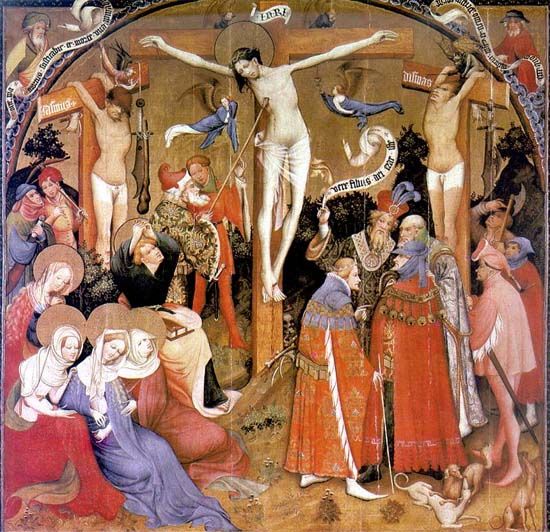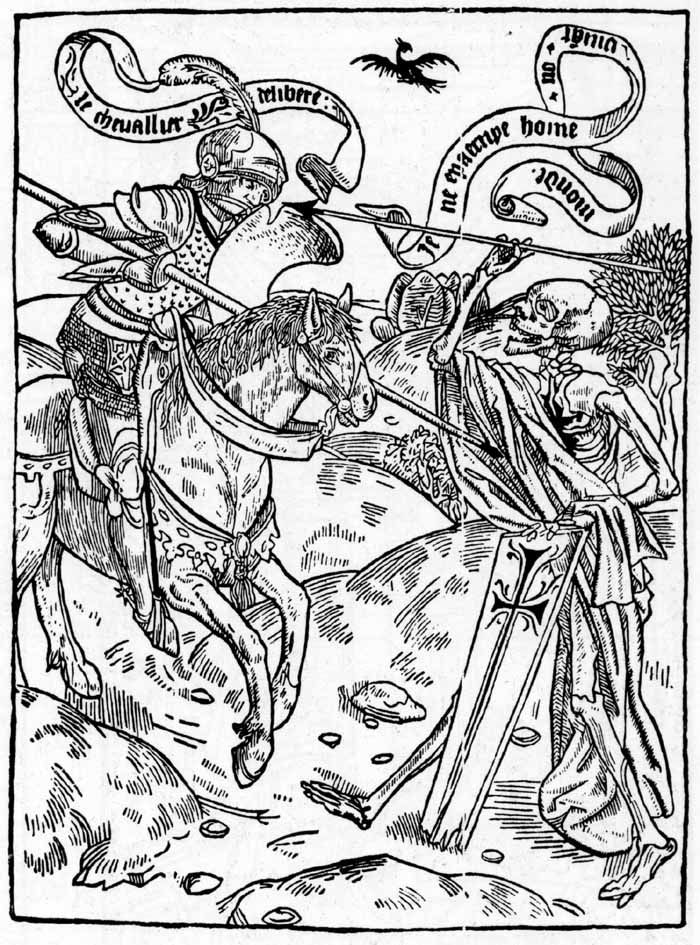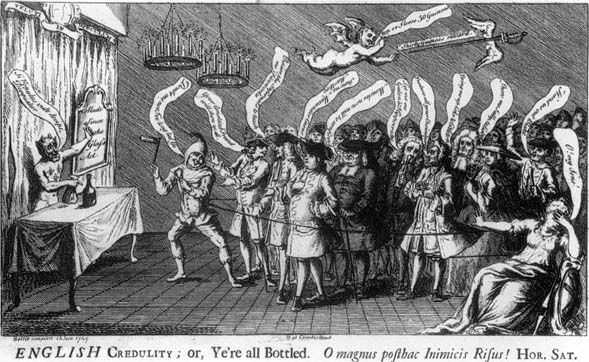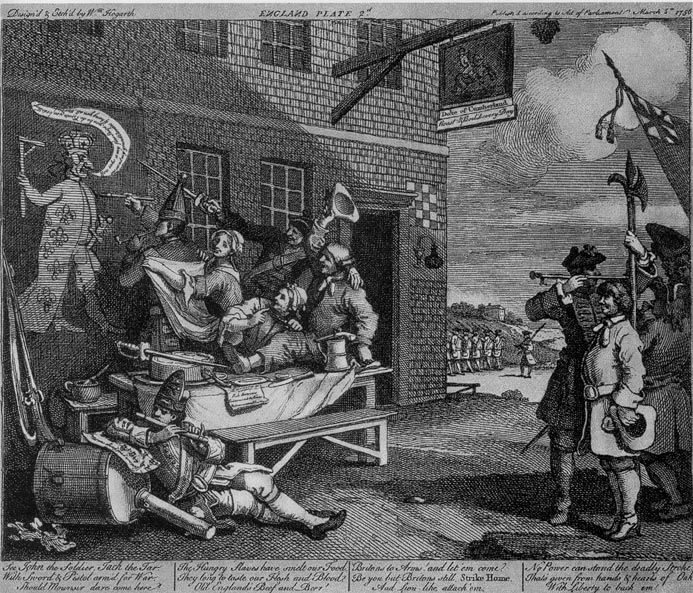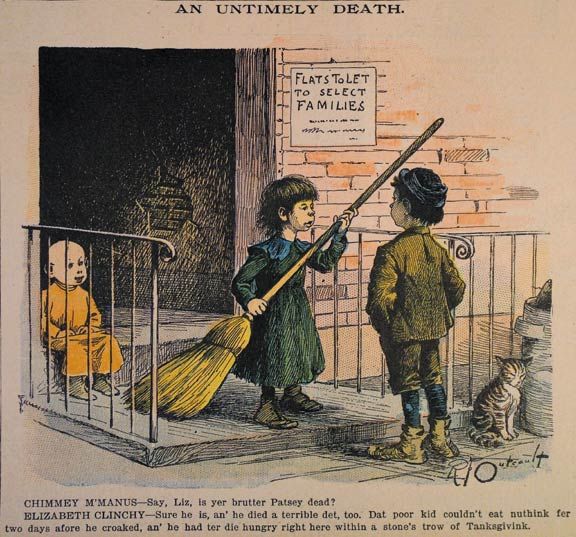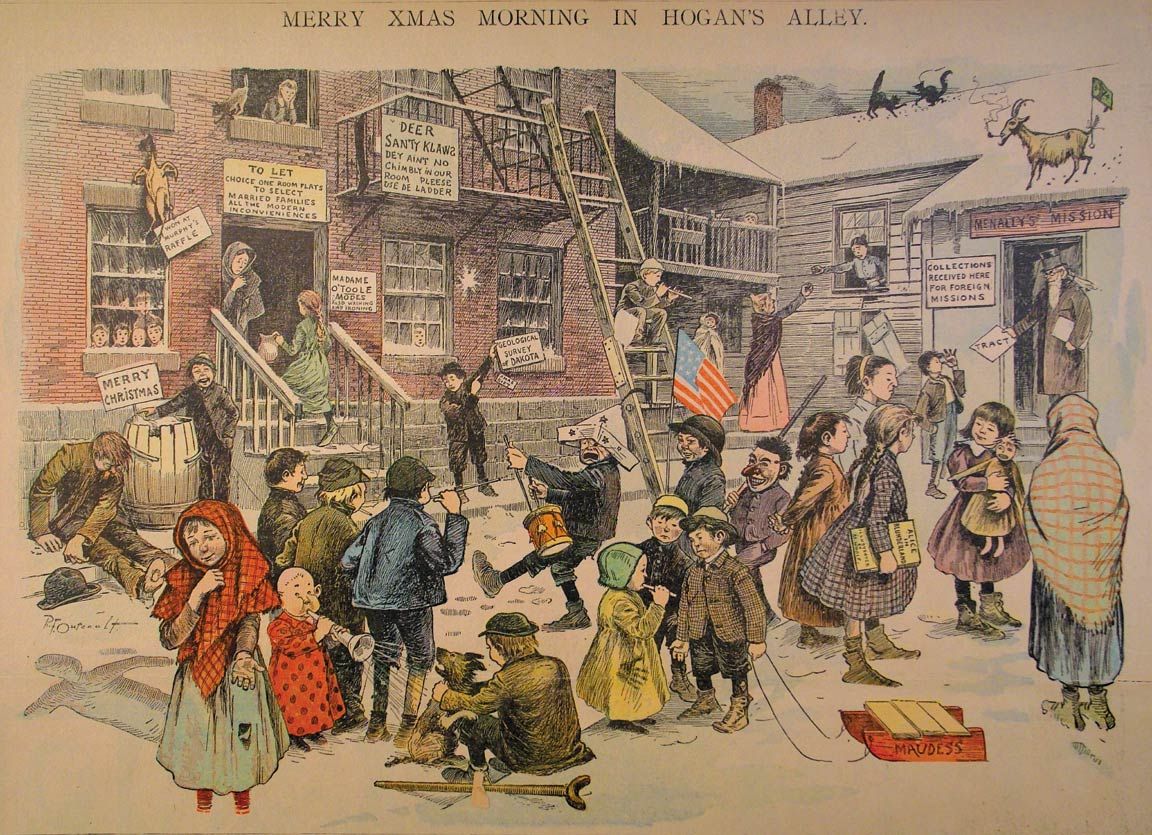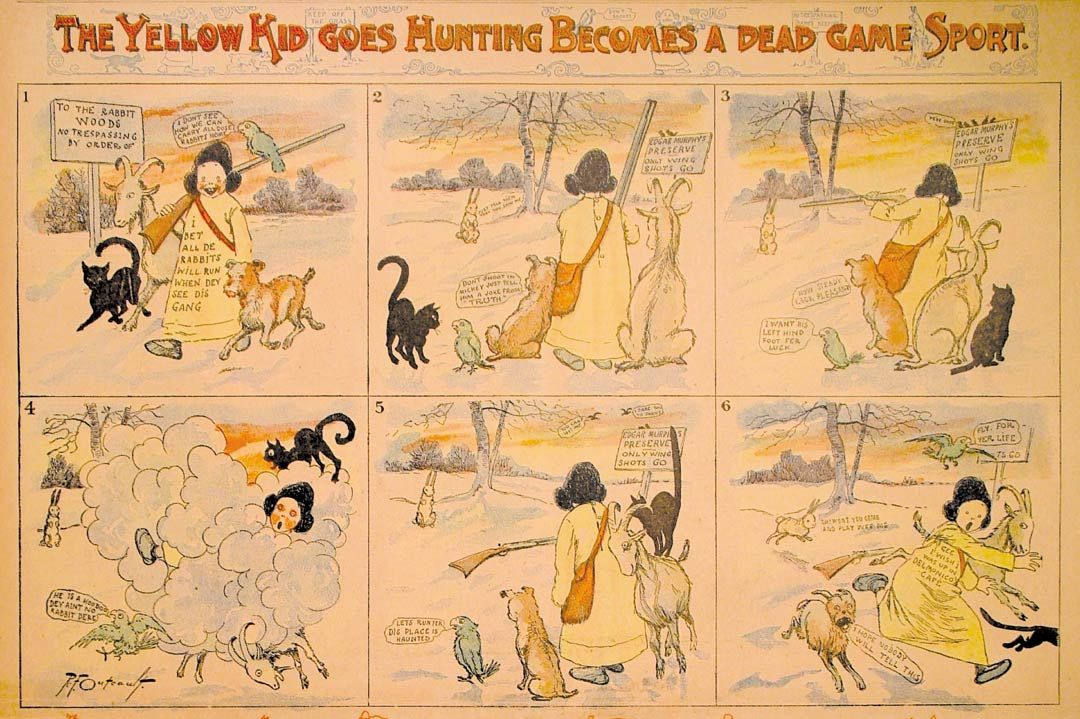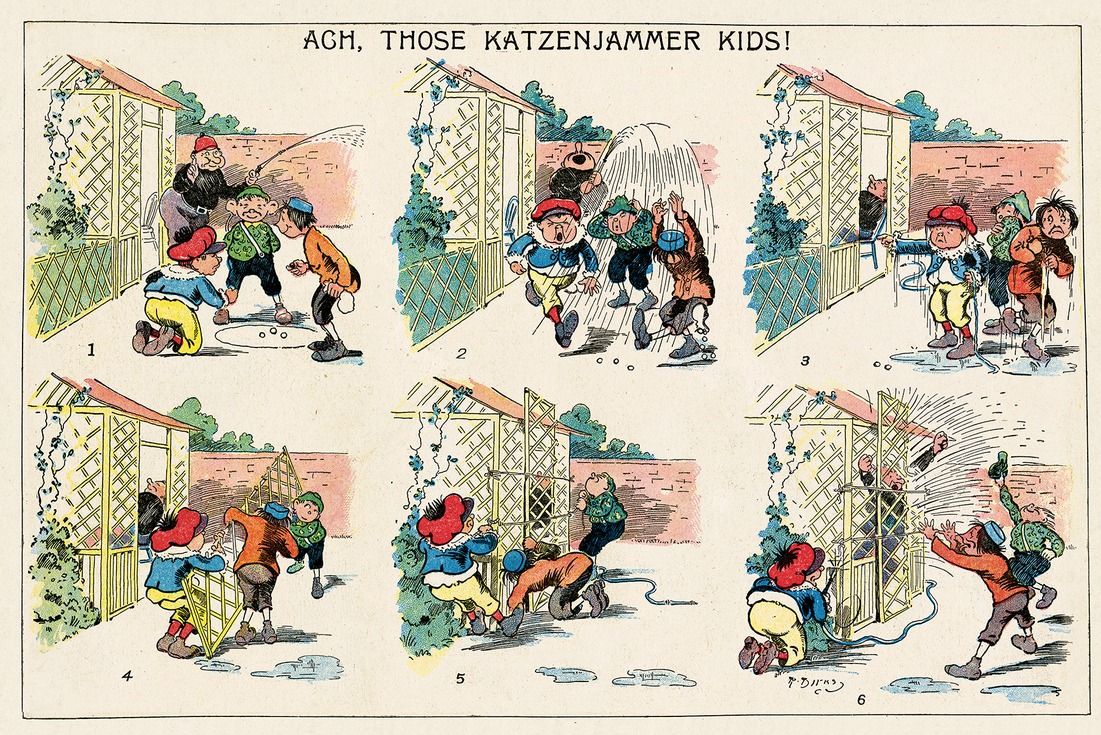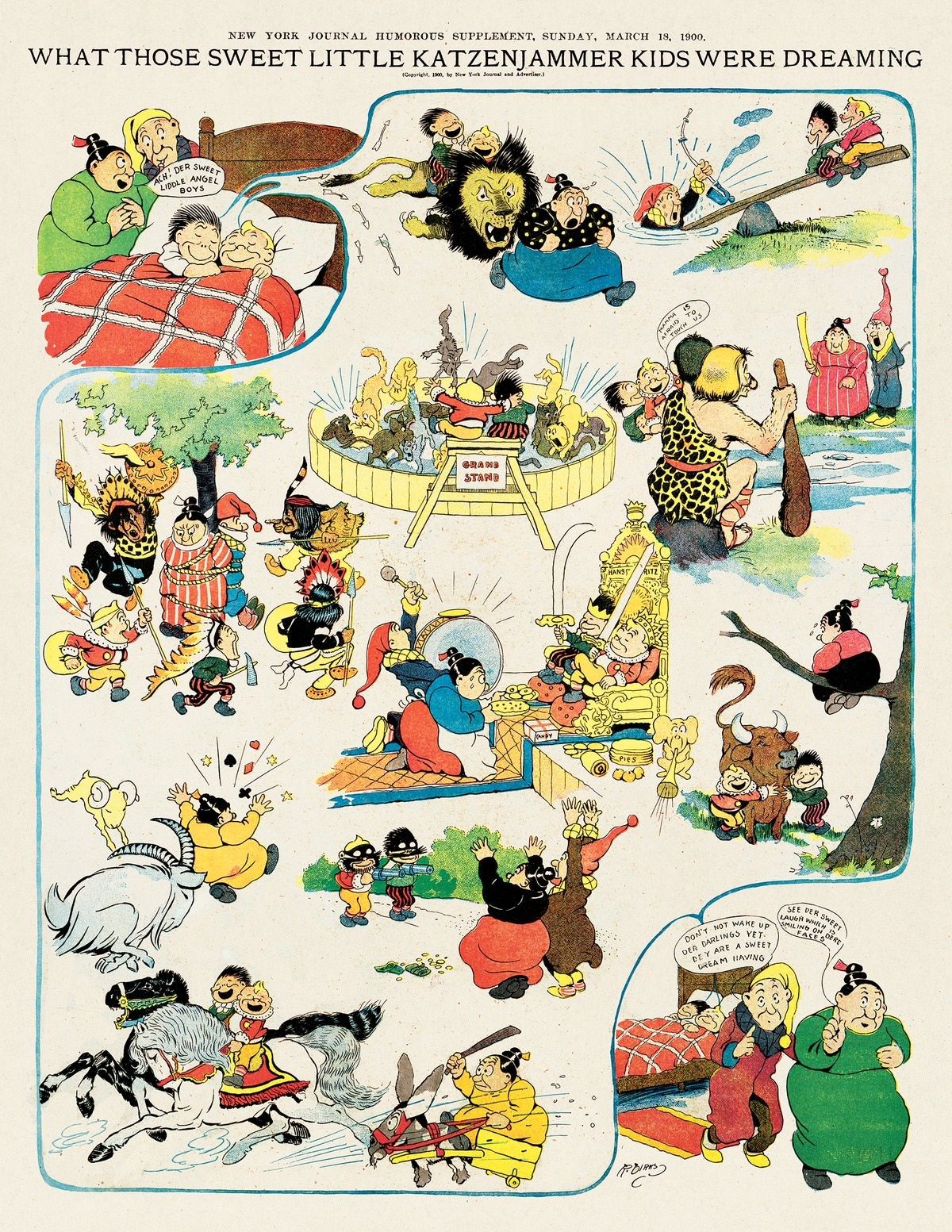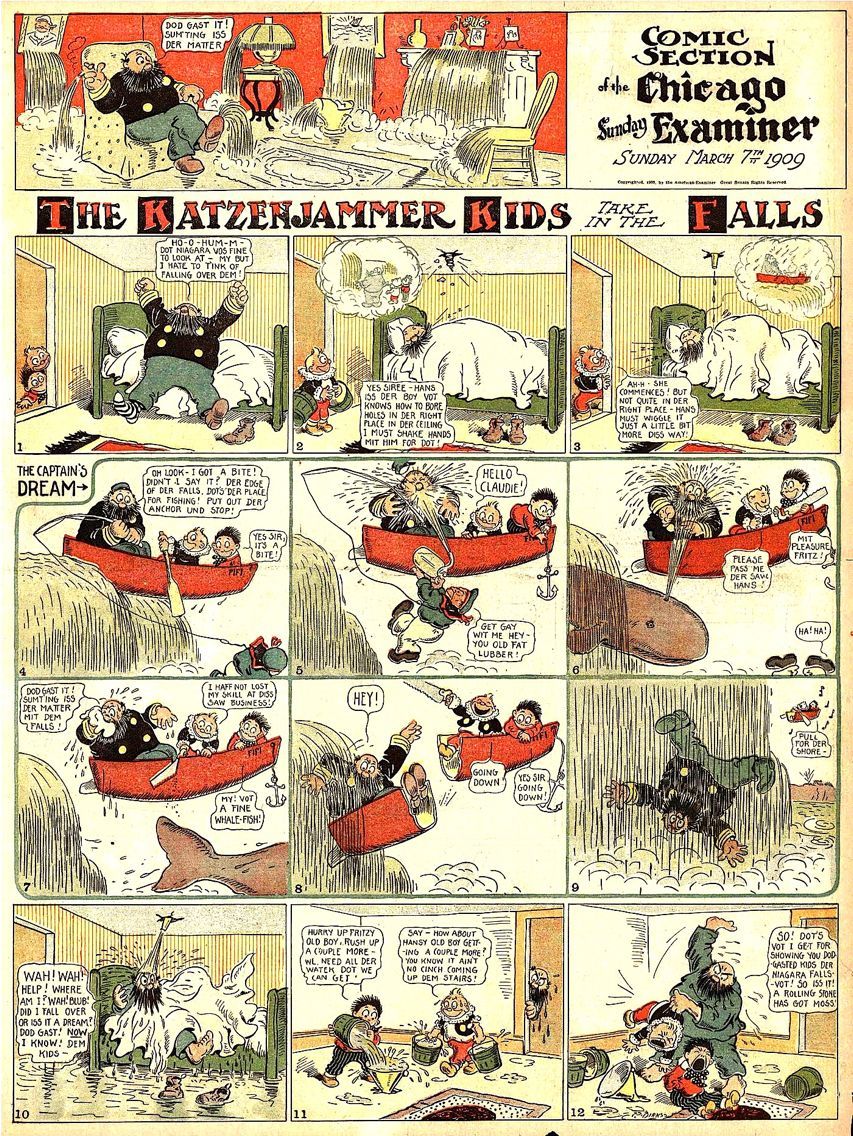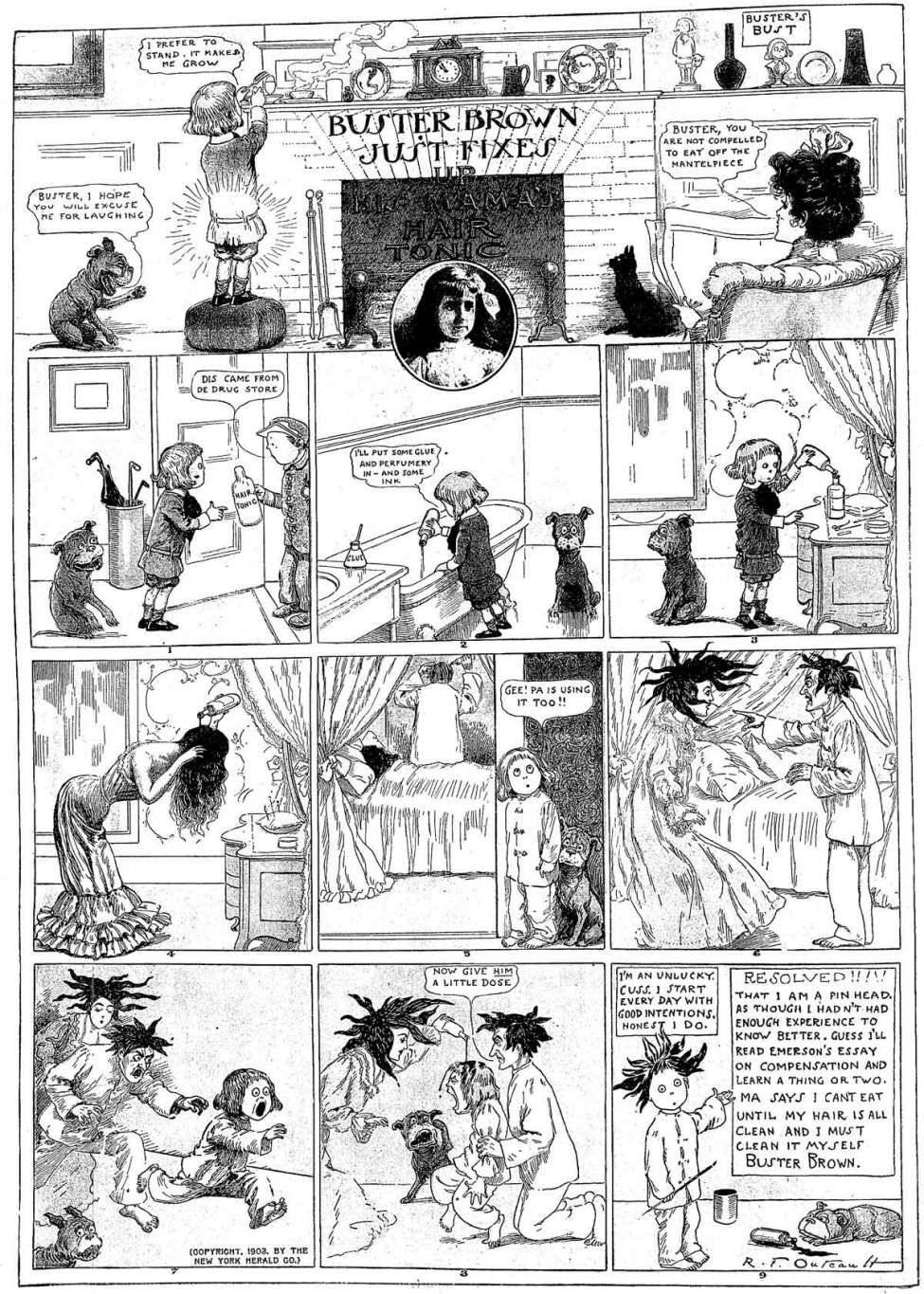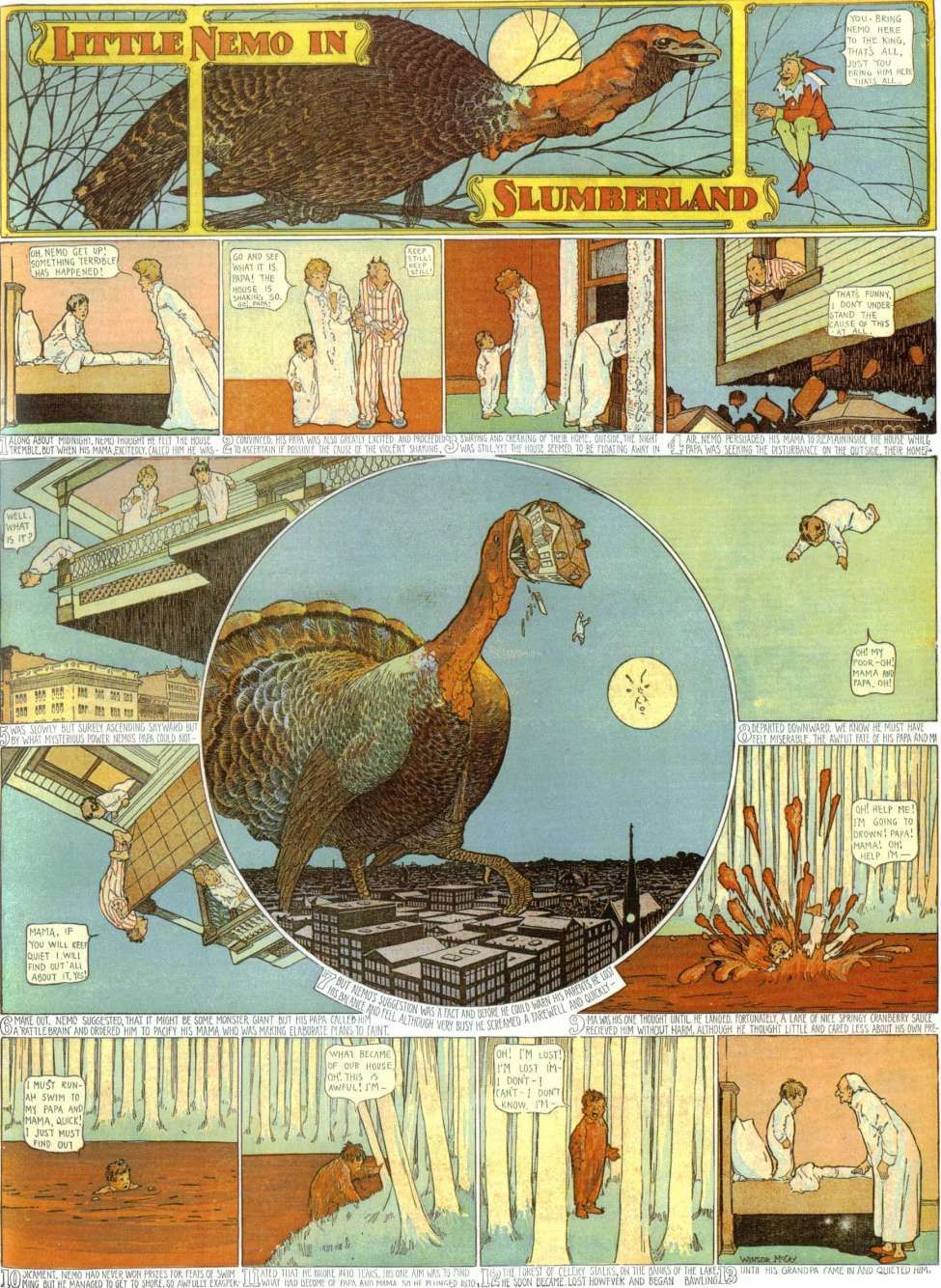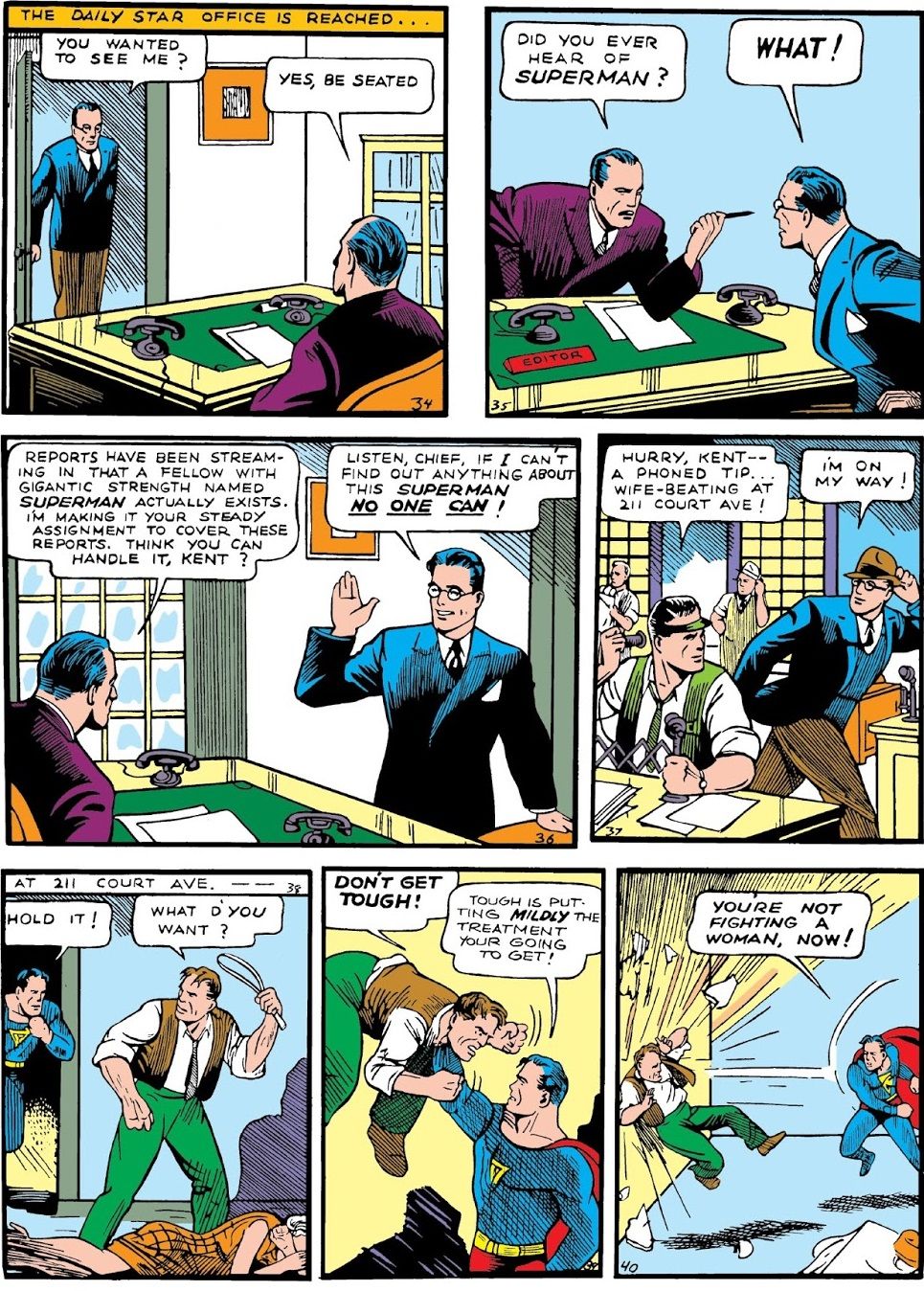In "When We First Met," we spotlight the various characters, phrases, objects or events that eventually became notable parts of comic lore, like the first time someone said, "Avengers Assemble!" or the first appearance of Batman's giant penny or the first appearance of Alfred Pennyworth or the first time Spider-Man's face was shown half-Spidey/half-Peter. Stuff like that.
Reader Steven H. wanted to know about specifically the history of the thought balloon, when that balloon was designed as a sort of cloud rather than a word balloon, but you know what? While I'm answering that, I should really just detail the history of the speech balloon in comics period.
What we now think of as word balloons probably owe their origins to 15th Century paintings and drawings that had I guess what you would call a "speech band," these sort of tapestries with words on them.
These are courtesy of some amazing research by the great historian about classic cartoons and comic strips, Andy Konky Kru.
From 1404, Konrad von Soest's Altar in Bad Wildungen...
From 1498, Cornelis' "Knight and Death"...
Okay, so that would be the standard for years, but as editorial cartoons became more and more popular in the 18th Century, we began to see the birth of what you would call a speech balloon in a number of British editorial cartoons...
From 1749...
Through the 1770s...
The idea of the word balloon was gaining popularity. However, not everyone liked the idea. In fact, the famous cartoonist, William Hogarth, mocked the idea in one of his cartoons in 1756...
So word balloons pretty much fell by the wayside by the time that the 19th Century began.
This brings us to essentially the introduction of the modern comic strip, which is where these things really came into focus. "Comes into focus," though, is a bit of a key term here in the sense that these things were not exactly clear cut. It wasn't like one guy decided, "Oh, hey, I'm going to have word balloons" and everyone copied him. No, it was a lot more subtle than that and there were all these other minor comic strips running around in American newspapers in the late 19th Century that it is difficult to truly determine which strip should be credited with being the "first" of anything, which is why we have more commonly come to credit the strips that rather POPULARIZED specific innovations rather than necessarily CREATED them. In other words, when the other comic strip artists out there were taking their cues, they were taking them from these innovators, so even if they weren't necessarily the FIRST to do their particular changes to the comic strip form, they were close enough that we might as well give them the credit. It's sort of a twist on the ol' koan, "If a tree falls in a forest and no one is around to hear it, does it make a sound?" in the sense that "If a comic strip debuts an idea but no one reads it, does it really count?"
In any event, this is a roundabout way to take us to Richard F. Outcault and his comic strip, Hogan's Alley, which told the stories of poor kids in New York City slums. Outcault did not use word balloons.
However, at one point, he had a distinctive poor kid show up in one of his strips...
That kid and his yellow outfit soon became the star of the strip, which was immensely popular at the time.
The "Yellow Kid" had dialogue, but it all went on his shirt...
However, while Outcault tended away from speech balloons, as you can see from this typical strip of his...
He DID have word balloons at times...
And since the strip was so popular, the word balloons likely influenced others. Including one strip that launched around the same time that was probably the birth of many of the modern aspects of comic strips...
Page 2: [valnet-url-page page=2 paginated=0 text='Enter the Katzenjammer Kids!']
Rudolph Dirks introduced a comic strip in 1897 called The Katzenjammer Kids, based on the classic German children's story, Max and Moritz, about two rambunctious little kids. In the original story, though, Max and Moritz were horrifically punished for their pranks. This twist here, then, is that the kids get away with their pranks...
As you can see from their first strip, Dirks was keeping with the standard approach of the era of no word balloons. However, Dirks soon evolved the strip to the point where not only were word balloons standard, but so, too, were more innovative stuff like dreams balloons...
Plus, Dirks is the guy who came up with thought balloons and making them look like clouds...
It's hard to find examples, but that's the best that I've got.
By the early 20th Century, Outcault had moved on to Buster Brown, which routinely used word balloons...
And pretty much everyone was using them by now, like Little Nemo in Slumberland...
The word balloons and the thought balloons were now solidly applied parts of comic strip culture and they have lived on ever since, especially in comic books. Like in Jerry Siegel and Joe Shuster's first Superman story in Action Comics #1...
Thanks for the question, Steven!
If anyone else has a question/suggestion for a notable comic book first, drop me a line at brianc@cbr.com!

